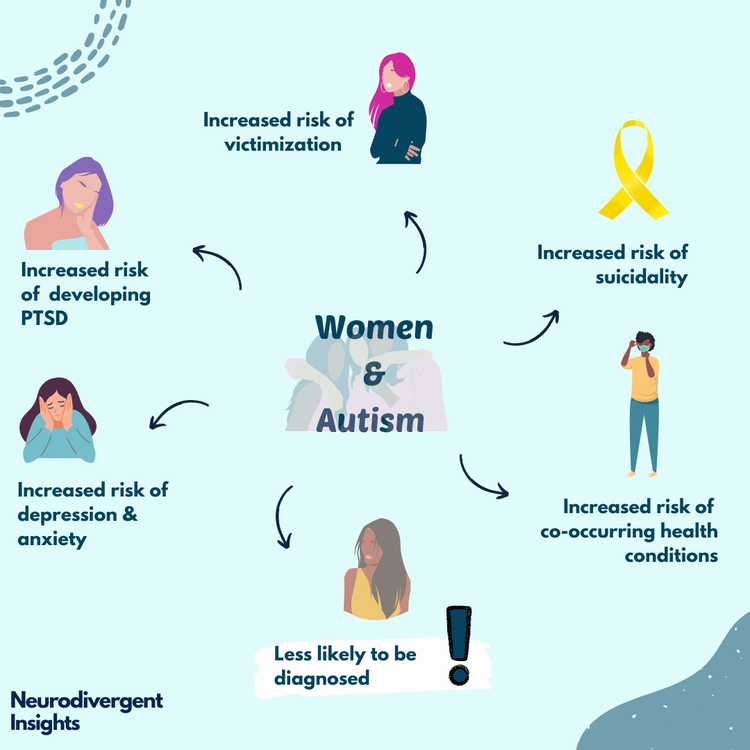The Influence of Very Early Treatment on Youngsters with Autism: What Moms And Dads Need to Know
The Influence of Very Early Treatment on Youngsters with Autism: What Moms And Dads Need to Know
Blog Article
Recognizing Autism: A Comprehensive Overview to Symptoms and signs
Autism Range Problem (ASD) includes a large range of features that can substantially affect a person's social interactions and day-to-day functioning. Acknowledging the symptoms and signs, such as difficulties with eye call, social communication problems, and sensory level of sensitivities, is critical for early intervention. Comprehending these subtleties not just aids caretakers and instructors in offering appropriate support yet additionally promotes a much more inclusive setting for individuals with ASD. As we explore the complexities of autism, it comes to be crucial to take into consideration exactly how these indicators show up in a different way across the spectrum and what effects they hold for effective intervention approaches.
Overview of Autism Range Condition
Defining Autism Spectrum Problem (ASD) involves recognizing it as a complicated neurodevelopmental problem identified by a series of obstacles in social interaction, communication, and behavioral patterns. The term "range" mirrors the wide irregularity in signs and their intensity, which can differ dramatically from one individual to an additional. ASD generally shows up in early childhood, although some people may not receive a medical diagnosis until later in life.
Aspects influencing the growth of ASD consist of environmental factors and genetic predispositions, although the specific causes remain under investigation. Medical diagnosis often counts on behavioral assessments, as there are no clear-cut medical examinations for ASD. Early intervention is vital and can considerably enhance results, concentrating on boosting communication abilities, social communications, and flexible actions.
Individuals with ASD might additionally show unique toughness, such as extraordinary attention to detail or details areas of competence. Recognizing the diverse nature of ASD is crucial for fostering a comprehensive environment that fits neurodiversity. Continued research study is vital for developing reliable treatments and support systems, allowing people with ASD to prosper and fulfill their potential within society.
Common Indications of Autism
Recognizing the typical signs of Autism Spectrum Condition (ASD) is vital for early recognition and treatment. These indicators can vary widely in severity and discussion, but certain qualities are often observed in individuals with ASD.
One of the most prevalent indicators is a significant trouble in keeping and establishing eye call. Individuals may additionally display limited interest in social interactions and show a choice for solitary play.
Sensory level of sensitivities are likewise usual; individuals may underreact or overreact to sensory stimuli, such as audios, appearances, or lights. autism. Language growth can be atypical, with some children displaying delayed speech or using language in uncommon methods, including echolalia-- duplicating expressions or sentences heard elsewhere
It is important to keep in mind that not every person with ASD will display all these indicators, and the degree of these actions can differ significantly. Early acknowledgment permits prompt support and sources, enhancing the high quality of life for those on the spectrum.
Social Communication Difficulties
Social communication obstacles are a hallmark of Autism Range Disorder (ASD), influencing an individual's capacity to engage effectively with others. These troubles can show up in various means, including obstacles in launching and keeping conversations, recognizing social signs, and responding properly in social communications.
People with ASD might battle with nonverbal interaction, such as eye contact, faces, and body language. This can lead to misconceptions, as their communicative intent may not be correctly translated by others. Additionally, they might locate it challenging to realize the subtleties of tone and context, which are necessary for efficient communication.
In team setups, individuals with ASD might really feel overwhelmed and might not recognize exactly how to join in discussions (autism). They may additionally display irregular conversational patterns, such as monologuing about particular rate of interests without recognizing social reciprocity
In addition, these challenges can cause social isolation or difficulties in creating relationships, as peers may misunderstand view publisher site their habits or interaction style. Recognizing these social communication challenges is important for cultivating helpful settings that advertise social abilities advancement and improve the quality of check over here communications for people on the autism spectrum.
Sensory Responses and sensitivities
Lots of people with Autism Spectrum Problem (ASD) experience increased sensory level of sensitivities that can significantly influence their day-to-days live. These sensitivities might manifest as over-responsiveness or under-responsiveness to sensory stimuli, consisting of noises, lights, textures, tastes, and smells. An individual with ASD might discover everyday noises, such as a vacuum cleanser or crowded atmospheres, extremely distressing, leading to anxiety or crises. Conversely, some may exhibit an indifference to discomfort or severe temperatures, which can present safety and security problems.
Sensory handling distinctions in people with ASD can also impact their capability to participate in social communications and regular activities. A youngster that is delicate to touch may resist physical love or avoid specific garments fabrics. Conversely, a choice for sure textures or tastes can restrict dietary choices and develop challenges throughout nourishments.
Comprehending these sensory sensitivities is essential for recognizing the one-of-a-kind experiences of people with ASD. Awareness of their sensory profiles can promote far better interaction and support techniques, producing an environment that fits their demands and boosts their lifestyle. Ultimately, acknowledging sensory level of sensitivities is a critical part of understanding the broader range of autism.

Supporting People With Autism
Efficient support for people with Autism Spectrum Problem (ASD) is critical for boosting their general well-being and cultivating freedom. Support approaches should be tailored to meet the special needs of each individual, considering their challenges and toughness.

Social skills training can likewise play a crucial function. autism. Engaging more information individuals in group tasks or role-playing circumstances can boost their capability to browse social interactions. In addition, it is essential to inform family participants, caregivers, and peers concerning ASD to promote a helpful and comprehensive neighborhood
Final Thought
Finally, an extensive understanding of Autism Spectrum Problem is necessary for acknowledging its signs and symptoms and indications. Early identification of usual qualities, such as social communication challenges and sensory sensitivities, enables instructors and caretakers to execute efficient interventions. By cultivating improved communication and social abilities, individuals with autism can browse their settings a lot more effectively. Inevitably, raised recognition and support can considerably enhance the lifestyle for those influenced by ASD.
Autism Spectrum Condition (ASD) encompasses a large range of characteristics that can considerably influence an individual's social communications and everyday functioning.People with ASD might struggle with nonverbal interaction, such as eye get in touch with, facial expressions, and body language.Lots of people with Autism Spectrum Problem (ASD) experience increased sensory level of sensitivities that can significantly influence their day-to-day lives.Sensory handling distinctions in individuals with ASD can likewise impact their capacity to engage in social communications and routine tasks.Recognizing these sensory sensitivities is important for identifying the special experiences of individuals with ASD.
Report this page